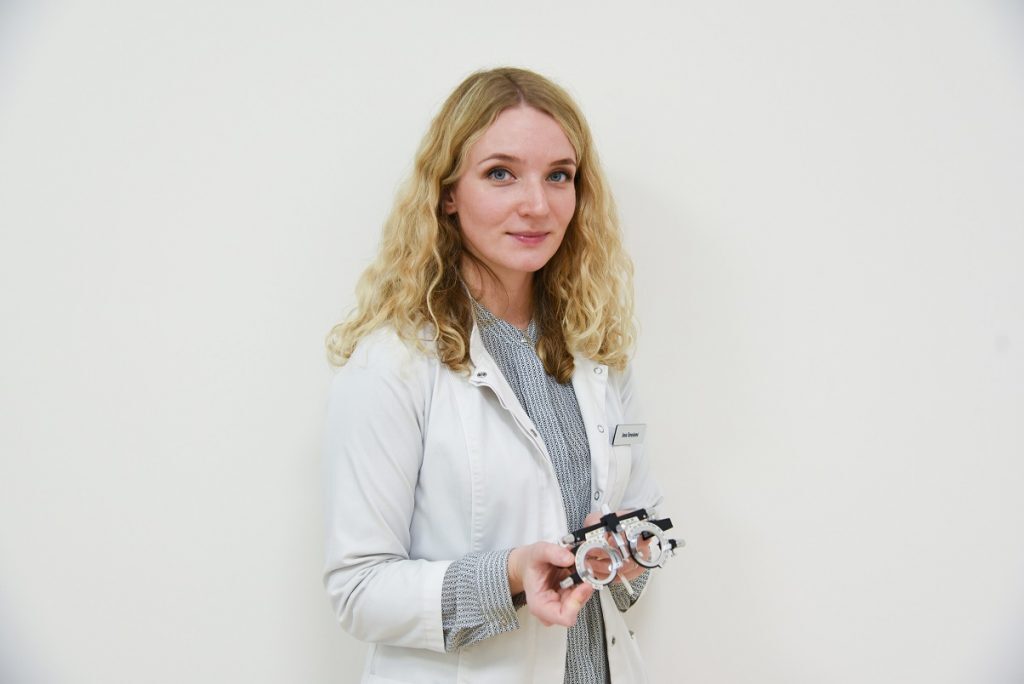People’s life expectancy is constantly increasing, but at the same time, the risk of contracting diseases increases too. Various eye diseases are no exception, often starting with slightly impaired vision. If the disorders are not corrected or treated, the quality of life is lost, and vision is also threatened.
According to Ieva Teresienė, an ophthalmologist at the “Lirema” Eye Clinic, one of the young people’s most common vision disorders today is myopia, and the most common eye disease of the elderly is cataract.
“Myopia is now called a silent epidemic because its numbers are constantly growing. The World Health Organization predicts that by 2050, almost half of the world’s population will be myopic,” says the eye doctor.
It is believed that one of the main factors determining this is that from a young age, children spend less and less time outdoors, in natural light, and more time in front of screens. Although technology improves every year, all possible eye protection devices are installed on the screens, but the problem is not the screen but the long work of the eyes at a short distance.
“The human eye is naturally accustomed to alternating distances between objects when looking. When working at a short distance without breaks at the same distance, it is no longer trained, the ability to quickly change focus is lost, and the eyes become strained and tired,” says I. Teresienė.
In old age, when the general metabolism in the body is disturbed or in the presence of such concomitant diseases as diabetes, the elasticity of the lens of the eye decreases, and the lens begins to become cloudy. The quality of vision gradually deteriorates due to the formation of cataracts. People should consult specialists for clarification of diagnosis and treatment.
“Cataracts can begin to develop not only due to senile processes, but also due to repeated eye inflammations, treatment of concomitant diseases, previous eye injuries, so it is essential to get checked in time to prevent further weakening of vision,” the ophthalmologist shares her experience.
According to the specialist, as the population ages, the number of people suffering from cataracts and glaucoma or permanent macular degeneration is increasing.
“This is because, as life expectancy increases, eye disease diagnostics, which are constantly improving, have become available to many patients. Previously, examining the patient’s vision so thoroughly and accurately was impossible. When such opportunities appear, and when patients pay more and more attention to their health, it is possible to detect the beginnings of the disease in time”, says I. Teresienė.
Not one will avoid a disorder
From about 40 years old, the eyes develop presbyopia when reading glasses become necessary.
“Presbyopia is an eye condition in which the eyes gradually lose the ability to focus on close objects. It’s a natural yet annoying part of ageing. It usually starts in the 40s and progresses gradually. The first sign is when a person wants to move the text away from them, the usual reading distance when reading,” the specialist points out.
According to I. Teresienė, it is impossible to stop or avoid this process, even for those who did not have any vision problems before, unless presbyopia is postponed for a while.
“By trying to live a healthy life, giving up bad habits, moving more, being in the fresh air, the body has more resources to fight ageing processes, so it is possible to postpone age-related disorders and maintain eye health for longer,” advises the ophthalmologist.
Prevention is the most important
Doctors recommend annual health examinations, especially for those with eye complaints. Even if no obvious disorders exist, the disease can start insidiously without warning signs.
“Compared to the last decade, people are becoming more aware, protect their health more, want to maintain their working and active age as long as possible, but there are still cases of people who delay applying,” says the ophthalmologist.
According to her, if you notice any of the 7 signs when your regular vision changes, you should be concerned and plan a visit to an ophthalmologist:
- If vision suddenly disappears and then recovers.
- From the age of 40, when there are confirmed cases of glaucoma in the family.
- With diabetes or newly diagnosed diabetes. Mainly if blood glucose levels are controlled poorly.
- It starts to flash before the eyes. Possible risk of retinal tears.
- If a curtain is drawn in front of the eyes, this is one of the symptoms of retinal detachment.
- When it is not possible to choose glasses or contact lenses. In young people, it can be a symptom of keratoconus, and in older people, it can be a symptom of cataracts.
- Noticing that the lines should be straight (for example, a door frame) is crooked and curved. Similar complaints are common in people with retinal diseases.
